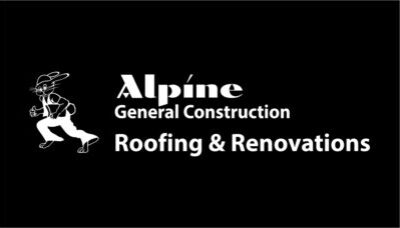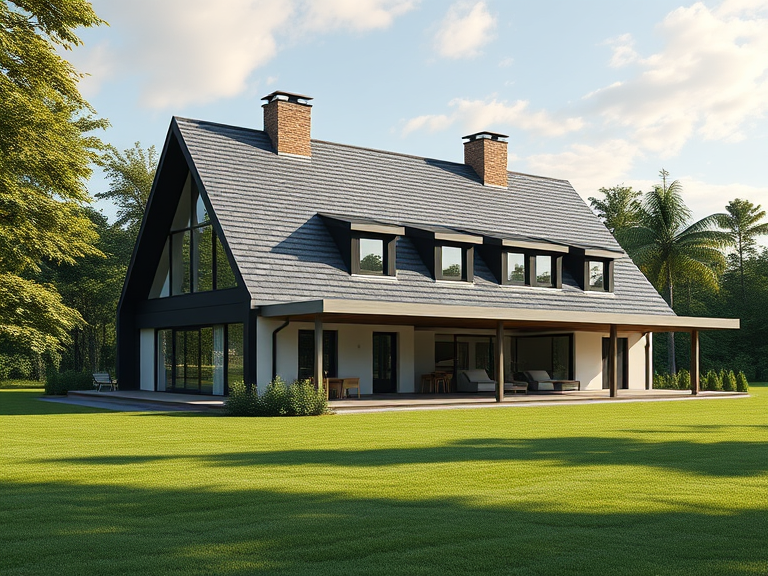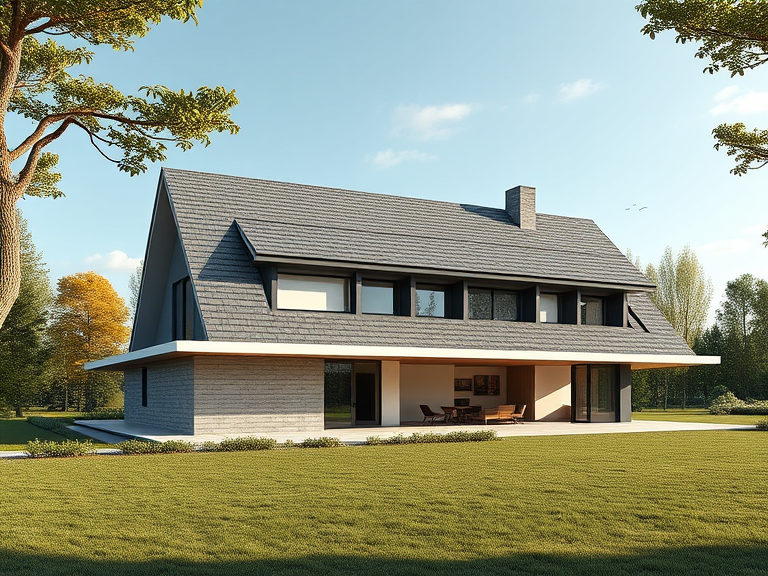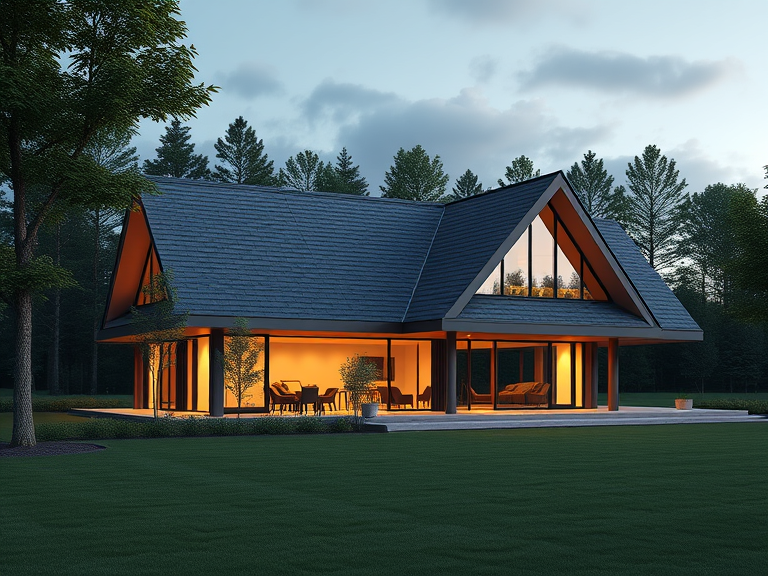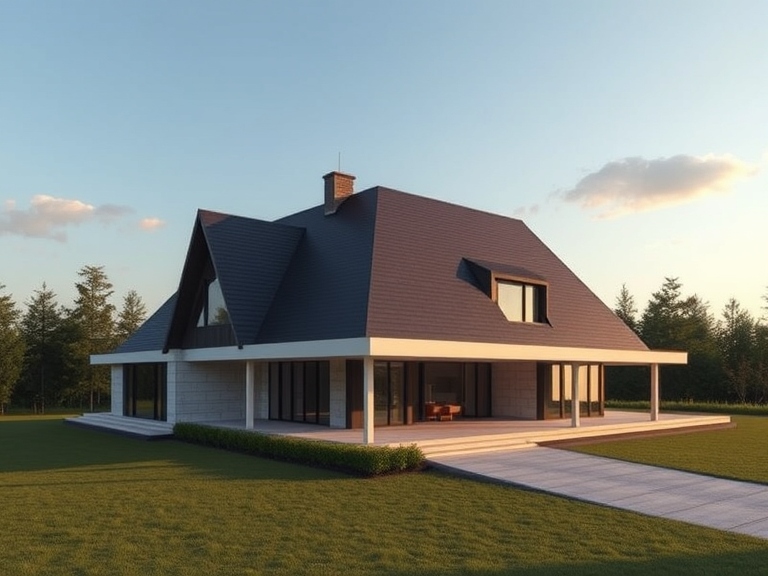
Asphalt shingles are a widely used roofing material, favored in residential construction due to their affordability and versatility. Composed primarily of a fiberglass mat coated with asphalt and mineral granules, these shingles come in a variety of colors and styles, making them a popular choice among homeowners aiming for aesthetic appeal alongside functionality. The manufacturing process involves layering the fiberglass mat with hot asphalt, followed by the application of the mineral granules which serve as UV protectants and add to the overall look of the shingles.
The popularity of asphalt shingles can be attributed to their cost-effectiveness and ease of installation. They are often more affordable than other roofing materials such as metal or slate, making them a practical option for many homeowners. Additionally, the lightweight nature of asphalt shingles allows for quicker installation processes, which can help reduce labor costs. The shingles are also designed to offer effective waterproofing, which is essential in protecting a home from the elements.
Asphalt shingles are available in two main types: three-tab shingles and architectural shingles. Three-tab shingles are the more traditional option, known for their flat appearance and lower upfront cost. In contrast, architectural shingles are thicker and are designed to mimic the look of wood shake or slate, providing a more dimensional aesthetic while often being more durable than their three-tab counterparts.
This overview of asphalt shingles highlights their composition, manufacturing process, and why they have become a prevalent choice in the realm of residential roofing. Understanding these fundamental aspects sets the stage for a deeper discussion on the pros and cons of choosing asphalt shingles for your home, emphasizing both the benefits and potential drawbacks associated with this roofing solution.
Advantages of Asphalt Shingles
Asphalt shingles are one of the most popular roofing materials in North America, and for good reason. One of their primary advantages is affordability. Compared to other roofing options, such as metal or slate, asphalt shingles offer a cost-effective solution for homeowners. This affordability makes them accessible to a wide range of budgets, allowing homeowners to renovate or build their houses without overextending financially.
Another significant benefit of choosing asphalt shingles is the variety available in terms of colors and styles. Homeowners can select from a vast array of designs, allowing them to customize the aesthetics of their homes. Whether one prefers traditional, modern, or even rustic looks, there is likely an asphalt shingle that fits the desired style. This versatility can significantly enhance the curb appeal of a property.
Moreover, asphalt shingles are known for their ease of installation. Most roofing professionals are familiar with the installation process, which often translates to lower labor costs and quicker project completion. This ease of installation not only saves time but also minimizes the disruption around the home during the roofing process.
Durability is another key aspect of asphalt shingles. While they may not be the most durable option available, good quality asphalt shingles can withstand a variety of weather conditions, including rain, wind, and moderate hail. They typically come with decent warranties, ensuring homeowners are protected against defects or premature wear.
Furthermore, certain types of asphalt shingles contribute to energy efficiency. Some products are designed with reflective surfaces that can minimize heat absorption, leading to lower energy bills during hot seasons. This is an important consideration for homeowners looking to reduce their energy consumption while maintaining comfort in their homes.
In conclusion, the pros and cons of choosing asphalt shingles for your home lean significantly towards the benefits, making them an attractive option for many homeowners.
Cost Effectiveness and Affordability
One of the primary considerations when selecting roofing materials is cost, and asphalt shingles are often lauded for their cost effectiveness and affordability. The initial installation costs of asphalt shingles are generally lower compared to alternative roofing options such as metal or tile. Homeowners can typically expect to pay between $90 to $100 per square for asphalt shingle roofing installation, whereas the prices for other materials can be significantly higher.
In addition to the initial investment, it is crucial to factor in the long-term maintenance expenses associated with various roofing options. Asphalt shingles generally require less maintenance than their counterparts, making them a practical choice for budget-conscious homeowners. While they may need to be replaced every 15 to 30 years, this replacement frequency is manageable and can be planned for over time. Regular inspections and cleaning are all that is needed to maintain their integrity, which helps to minimize unexpected long-term costs.
Moreover, when evaluating the overall expenditure related to roofing, it is important to consider the lifespan and durability of the materials. Although asphalt shingles may have a shorter lifespan compared to metal or slate options, their initial lower cost often offsets this factor. In many cases, homeowners find that choosing asphalt shingles can lead to considerable savings when evaluating both upfront and ongoing maintenance costs cumulatively over the years.
Asphalt shingles also offer versatility in terms of styles and colors, providing aesthetic appeal at an affordable price point. This aspect allows homeowners to enhance their property’s curb appeal without incurring substantial costs. In conclusion, the pros and cons of choosing asphalt shingles for your home should include their affordability and cost-effectiveness, making them a pragmatic choice for many homeowners.
Different Types of Asphalt Shingles
Asphalt shingles represent a popular roofing option due to their affordability and ease of installation. Among the variety available, the two primary types are three-tab shingles and architectural shingles. Each type has unique characteristics that cater to different aesthetic preferences and functional requirements.
Three-tab shingles are the more traditional option, characterized by their flat appearance and the presence of three cutouts or tabs along the lower edge. This design gives the shingles the illusion of separation, which can enhance the home’s aesthetic while keeping costs manageable. They are lightweight and relatively easy to install, making them a common choice for budget-conscious homeowners. However, they are typically less durable than their architectural counterparts, with an average lifespan of 15 to 20 years. Additionally, three-tab shingles may be more prone to wind damage, as they have fewer layers to provide structural integrity.
On the other hand, architectural shingles offer a more contemporary and textured look. These shingles feature a multi-dimensional design, created through varied shapes and thicknesses. This not only enhances visual appeal but also contributes to increased durability. Architectural shingles often come with a longer lifespan, typically ranging from 25 to 30 years. Furthermore, they are designed to withstand higher wind speeds, making them a more resilient choice in areas prone to severe weather.
Ultimately, the decision between three-tab and architectural shingles hinges on factors such as budget, desired appearance, and local climate conditions. Homeowners should consider these pros and cons when selecting the most suitable option for their roofing needs, ensuring an informed investment that complements their home while providing adequate protection.
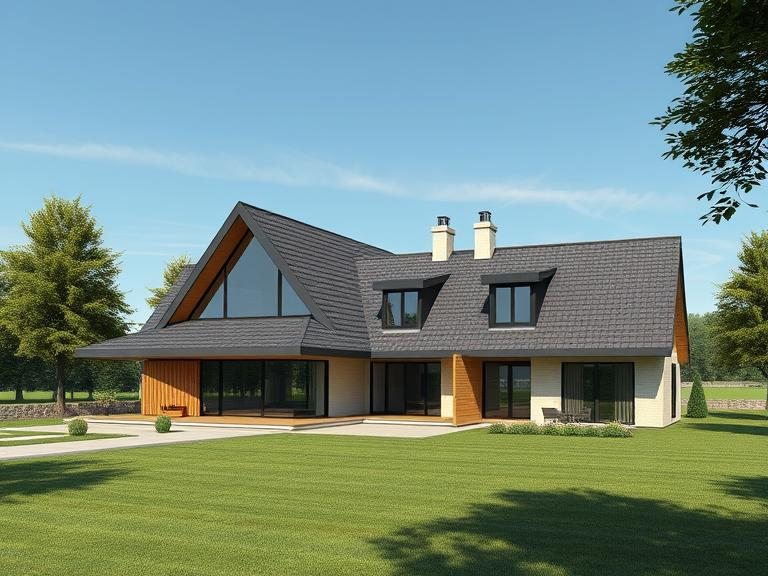
Disadvantages of Asphalt Shingles
While asphalt shingles are a popular roofing material for residential homes due to their affordability and variety of styles, they do have certain disadvantages that homeowners should consider. One notable drawback is their susceptibility to weather damage. Asphalt shingles can be prone to issues such as curling, cracking, or even blowing off during severe storms. In regions experiencing harsh weather conditions, the durability of asphalt shingles may not meet homeowners’ expectations, potentially leading to costly repairs or earlier-than-anticipated replacements.
Another downside is the lifespan of asphalt shingles when compared to other roofing materials. Typically, asphalt shingles can last between 15 to 30 years, depending on the quality and type of shingles used, as well as the local climate conditions. In contrast, metal or tile roofs can last substantially longer, often exceeding 50 years. This shorter lifespan means that homeowners may find themselves investing in a new roof sooner than they had planned, which can be a significant financial burden over time.
Additionally, the environmental impact of asphalt production and disposal cannot be overlooked. Asphalt shingles are primarily made from petroleum-based products, contributing to fossil fuel consumption and greenhouse gas emissions during their manufacturing process. Moreover, disposing of asphalt shingles can pose challenges, as they are often sent to landfills and take many years to decompose. While some recycling options are available, the overall ecological footprint of asphalt shingles raises questions about their sustainability as a roofing material.
In light of these factors, it is essential for homeowners to weigh the pros and cons of choosing asphalt shingles for their homes. By considering aspects such as weather resilience, longevity, and environmental effects, they can make a more informed decision tailored to their specific needs and circumstances.
Durability and Longevity Concerns
Asphalt shingles are a popular choice among homeowners due to their affordability and ease of installation. However, when considering the pros and cons of choosing asphalt shingles for your home, durability and longevity are critical factors to assess. Typically, asphalt shingles can last anywhere from 15 to 30 years, depending on various aspects such as climate, installation quality, and maintenance practices.
Extreme weather conditions can significantly affect the lifespan of asphalt shingles. For instance, areas that experience heavy rain, hail, or strong winds may see a reduction in the durability of shingles over time. Wind-driven rain can lift the edges of the shingles, leading to moisture penetration and resulting in potential leaks. Similarly, extreme temperatures can cause expansion and contraction, further compromising their integrity. As such, homeowners in regions prone to severe weather should carefully evaluate whether asphalt shingles can adequately meet their needs.
Maintenance is another crucial factor that impacts durability. Regular inspections can identify problems such as curling or cracking shingles early before they lead to significant damage. Cleaning gutters and ensuring proper drainage can prevent water backup that stresses the roof. Additionally, addressing debris accumulation, such as leaves or branches, can safeguard the shingles from premature wear. By following these maintenance tips, homeowners can extend the lifespan of asphalt shingles beyond the industry averages.
In conclusion, while asphalt shingles exhibit several advantages, their durability and longevity largely depend on environmental conditions and the level of maintenance performed. Homeowners should weigh these considerations carefully when determining if asphalt shingles are the right roofing material for their home. This evaluation will ensure a wise investment that balances cost with long-term roof performance.
Maintenance Requirements for Asphalt Shingles
Regular maintenance of asphalt shingles is essential to ensure their longevity and optimal performance. Homeowners should conduct routine inspections at least twice a year, ideally in the spring and fall. These inspections help identify any potential issues, such as damaged, missing, or curled shingles that could compromise the roof’s integrity. Early detection during these checks is crucial, as it allows for timely repairs before more extensive damage occurs.
In addition to inspections, cleaning practices play a vital role in maintaining asphalt shingles. It is advisable to remove debris, such as leaves and branches, from the roof and gutters. Accumulated debris can trap moisture and promote the growth of mold and algae, leading to premature deterioration. Furthermore, homeowners should consider the use of a soft brush or broom for cleaning the shingles, as harsh methods, such as pressure washing, can dislodge granules and damage the shingles themselves.
When discussing the pros and cons of choosing asphalt shingles for your home, it’s important to consider common repairs and their significance. Patching minor leaks, replacing missing or damaged shingles, and addressing issues caused by overhanging tree branches are typical maintenance tasks. Addressing these repairs swiftly not only preserves the roof’s appearance but also prevents further damage to the underlying structure.
Ultimately, the maintenance requirements for asphalt shingles underscore the importance of proactive care. While asphalt shingles are known for their affordability and aesthetic appeal, keeping them in good condition requires dedication and consistent effort. By investing time and resources into regular inspections and routine maintenance, homeowners can significantly extend the lifespan of their asphalt shingle roofs, ensuring both functionality and value. This diligence exemplifies the need to balance the pros and cons of choosing asphalt shingles for your home, as effective maintenance practices enhance their overall performance.
Environmental Impact of Asphalt Shingles
Asphalt shingles have become a popular roofing choice for many homeowners due to their affordability and ease of installation. However, when considering the pros and cons of choosing asphalt shingles for your home, it is essential to examine their environmental impact. The materials used in asphalt shingles primarily consist of fiberglass or organic felt combined with asphalt and mineral granules. While these materials contribute to the shingles’ durability, they raise concerns about sustainability.
The production of asphalt shingles involves a significant amount of energy and natural resources. The extraction of raw materials and the manufacturing processes emit greenhouse gases, which can contribute to global warming. Additionally, the mining of petroleum, a key component in asphalt production, can lead to habitat destruction and biodiversity loss. Thus, while asphalt shingles offer benefits for homeowners, their production generates notable environmental costs.
One positive aspect of asphalt shingles is that they can be recycled. Many municipalities and recycling programs accept asphalt shingles, which can be processed and repurposed for various uses, such as road construction or as aggregate in new shingle production. This recycling process helps reduce landfill waste and can mitigate some environmental concerns associated with the disposal of old shingles. However, the availability and efficiency of recycling programs can vary by region, limiting the overall positive impact on sustainability.
It is crucial for homeowners to be aware of the life cycle of asphalt shingles, from production to disposal. By understanding the environmental implications, individuals can make informed decisions when weighing the pros and cons of choosing asphalt shingles for their homes. In conclusion, while asphalt shingles offer several advantages in terms of cost and performance, their environmental impact must not be overlooked. Homeowners should consider these factors when planning their roofing projects.
Conclusion: Is Asphalt Shingle the Right Choice for Your Home?
As we have explored the pros and cons of choosing asphalt shingles for your home, it is essential to evaluate the essential factors that could influence your decision. On the positive side, asphalt shingles are recognized for their affordability and wide range of styles and colors, making them accessible to homeowners with varying budgets and aesthetic preferences. Their installation process is relatively simple, which can reduce labor costs and time compared to other roofing materials. Additionally, asphalt shingles can offer adequate protection against the elements and have a lifespan of 15 to 30 years, depending on the type chosen, thus providing homeowners with a practical roofing solution.
However, there are notable drawbacks associated with asphalt shingles that warrant consideration. While generally less expensive up front, they may incur higher long-term maintenance costs, particularly if you live in an area prone to harsh weather conditions. Additionally, asphalt shingles have a lower energy efficiency rating and may not perform well under extreme temperatures, leading to potential issues such as curling or granule loss over time. Furthermore, their environmental impact should be another factor to contemplate, as asphalt shingles are petroleum-based and not easily recyclable, raising questions regarding sustainability.
In conclusion, determining whether asphalt shingles are the right choice for your home depends on a thorough assessment of the pros and cons discussed. By weighing these considerations against your personal preferences, budget constraints, and environmental values, you will be better equipped to make an informed decision on the most suitable roofing material for your home. Each property is unique, so what may work for one homeowner might not be the ideal solution for another. Therefore, taking the time to reflect on these elements can lead to a satisfactory outcome for your roofing needs.
